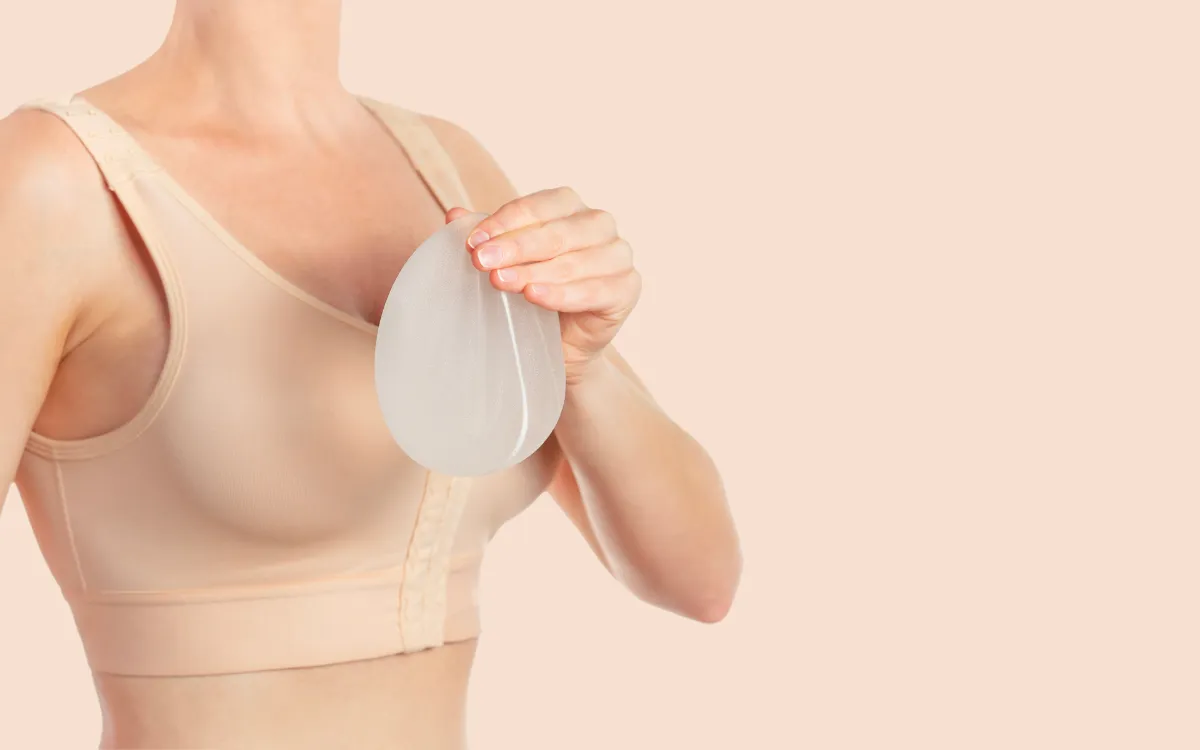Breast Implant Pain after 10 Years? What to Do?
By Partington Plastic Surgery on February 18, 2024 in Breast Implants

A decade brings new styles, technologies, and changes to the body. If you’ve had breast implants for 10 years and are experiencing pain or discomfort, it’s natural to wonder if it’s time for a change. Most importantly, with the right therapy, your symptoms can be gone and your comfort and peace of mind rebuilt.
This article answers your questions about breast implant pain after 10 years, its causes, diagnosis, treatment, and prevention.
Why Might Breast Implants Start Causing Pain After 10 Years?
Breast implants might cause pain after a decade for many reasons. Knowing the underlying causes will enable you to choose the correct line of action for relief.
1. Natural Aging and Changes in Breast Tissue
Your body changes with age. Over time, breast tissue may lose flexibility, and skin may sag, changing the way your implants sit. These natural changes can cause chest tension.
2. Implant Wear and Tear
Though they can provide years of comfort and confidence, implants are not designed to be permanent. Natural wear down of materials raises the risk of leaks or ruptures. Implants are durable, however, most experts recommend replacing them every decade for safety and comfort. This proactive strategy keeps you confident and supported, prioritizing your health and well-being.
3. Weight Fluctuations and Hormonal Changes
Breast density, suppleness, and volume may diminish with menopause, affecting breast appearance and implant pain. Regular visits to medical experts help address these issues and prevent breast implant pain 10 years later.
4. Capsular Tightness
This condition hardens scar tissue surrounding the breast implant. This happens when too much scar tissue in your body compresses and tightens the implant. This can cause stiffness, deformation, and pain. Although it can develop at any time following cosmetic or reconstructive breast surgery, capsular tightness is most usually seen in the first few months following an operation or several years later.
5. Implant Rupture or Leakage
Although safety is considered in the design, rupture over time is possible with implants. Silicone implants can have “silent ruptures,” where the gel drains slowly without symptoms. Silicone breast implant rupture can show up as pain, changes in breast form, or swelling.
6. Breast Implant Illness
Some people have BII following breast augmentation surgery or repair with implants. BII comprises symptoms like tiredness, joint pain, cognitive fog, hair loss, and autoimmune-like reactions, albeit not formally a medical condition. These symptoms may emerge quickly after implantation or years later and vary in intensity. Although the precise origin of BII is unknown, studies point to an individual’s immune response to implant materials or biofilm on the implants as perhaps responsible.
Stay calm and contact an expert for a proper diagnosis if you have chest pain. Consulting a professional might ease your concerns about probable causes. Worrying without professional advice can worsen physical pain and overall health.

Diagnostic Steps: How to Assess the Cause of Pain
Knowing the cause of the breast implant pain after 10 years will help you choose a remedy. A professional will approach your assessment in this way:
- First, consult a board-certified plastic surgeon. They are going to examine the implants and surrounding tissue for anomalies.
- Implant integrity is generally assessed by an MRI, ultrasound, or mammography. These tests can find leaks, capsular contraction, or ruptures — that might not be obvious from the outside.
- Capsule tightness progresses from modest hardness without symptoms to severe discomfort and deformity. Your surgeon will decide the degree of seriousness and suggest a line of action.
- A comprehensive exam will detect particular issues and unrelated breast conditions like cysts, breast cancer, and other problems.
Breast Implant Pain After 10 Years: Treatment Options
Non-surgical treatments can usually help alleviate moderate discomfort and enhance quality of life:
- Over-the-counter or prescription painkillers can relieve minor discomfort. Safe and effective relief is possible with the appropriate approach.
- A gentle massage or specialized rehabilitation can help you feel more comfortable.
- Simply wearing supportive bras, avoiding particular sleeping positions, and maintaining a healthy weight can reduce pain and improve long-term comfort.
Natural Look
Confident Beauty
24 Hour Rapid Recovery, Muscle Sparing.

Surgical Solutions
Should non-invasive treatments fail to address the problem, breast implant revision surgery is usually the next best plan of action and is well-known to be rather successful. This procedure targets the problem’s fundamental cause for long-term reduction when other methods fail.
- Removal of hardened scar tissue around the implant to reduce pain and restore a natural appearance.
- Breast implant removal or replacement may be necessary if rupture or significant wear is present.
- For patients who choose removal, fat grafting provides a natural alternative, using your body’s own fat to restore volume.
- If sagging or drooping is causing discomfort, a breast lift can reposition the breasts and improve symmetry.
During the visit, you may confidently ask questions, clarify, and consider your alternatives in a friendly setting. A successful treatment includes comfort, trust, and a collaborative approach that prioritizes your health and goals.
Preventative Measures: How to Maintain Breast Implant Health

Carefully maintaining implants can improve their lifespan and reduce complications like breast implant pain 10 years later.
- Routine Checkups and Imaging: Plan regular visits to your plastic surgeon. Annual exams and imaging discover concerns early.
- Massage and Bra Support: Capsule tightness can be avoided with regular implant massage—only if advised by a medical professional. Fitted bras also provide support.
- Healthy Lifestyle Choices: Keep a balanced diet, drink enough water, and give steady weight control priority. These factors improve breast tissue and implant lifetime.
- Understanding When to Replace Implants: Know the normal lifetime of your implants and keep an eye on them for indications of degradation like discomfort, leaks, or obvious breast shape deformation.
Addressing Breast Implant Pain Safely and Confidently
Been having breast implant pain after 10 years of surgery? Remember that you have support and remedies. Many problems can cause pain. It is essential to understand possible causes, discuss all treatment possibilities with a professional, and choose the one that will be the best for you. Action can improve your quality of life, whether it’s non-invasive therapies, corrective surgery, or qualified advice. There is help; you do not have to negotiate this road alone.
Early detection of flaws and prevention of problems depend on regular visits to your doctor and honest communication. Giving health first priority is a great investment in your future. Remember that our team is here to carefully assist you with knowledge, a personal approach to handling your issues, and caring.
Return to Overview